This season’s Brazil in the Garden exhibition features a bold tropical look at the Chicago Botanic Garden—you can get that same vibrant feel in your home garden, using perennial plants.
Surprisingly, there are a number of plants that thrive in the Chicago area in spite of their tropical looks. With attributes ranging from huge leaves, delicious fruits, or potent fragrances, these trees and shrubs will add a tropical splash to your backyard year after year.
Magnolia ashei is one of the most tropical-looking plants at the Chicago Botanic Garden. It features huge leaves, huge flowers, and huge fruits. The leaves can grow up to 36 inches long, the flowers can be more than a foot across, and the fruits are up to 5 inches long and turn bright red. Magnolia ashei has an irregular growth habit and makes a bold specimen. Look for this one in the Native Plant Garden (however, this plant is not an Illinois native).
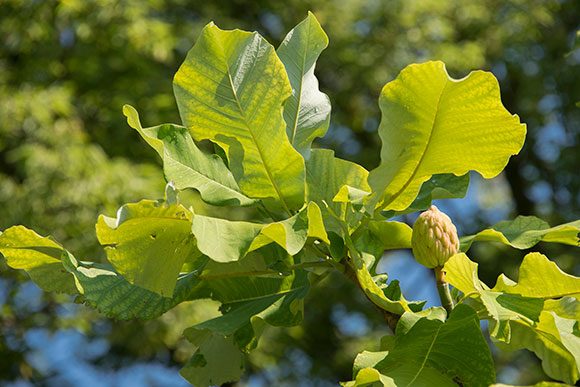
Another large leaf magolia, Magnolia tripetala x obovata, is similar in most respects; however, it features a broad, round form and is a bit more formal in the landscape. This magnolia can be found in the Waterfall Garden.
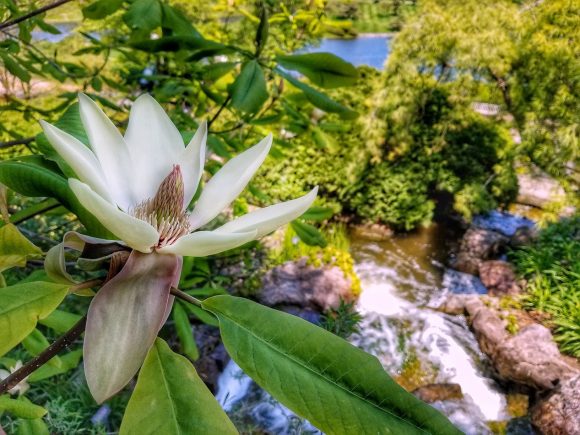
Campsis radicans is a native vine with large, orange-red, trumpet-shaped flowers all summer long. The flowers are a hummingbird magnet, which just adds to the tropical allure, and are available in numerous colors, including red, orange, and yellow. This is a large, growing vine so give it room to grow. It does tolerate pruning but blooms best when allowed to grow uninterrupted. Even the seed pods are ornamental, looking almost like green bananas hanging from the flower clusters. Look for it in the Waterfall Garden, and the fence surrounding the Graham Bulb Garden, where we have red and yellow varieties mixed together.
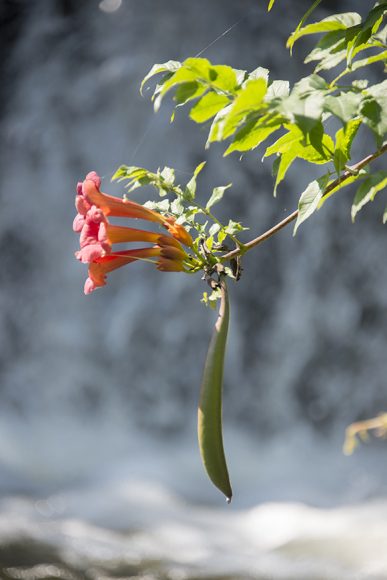
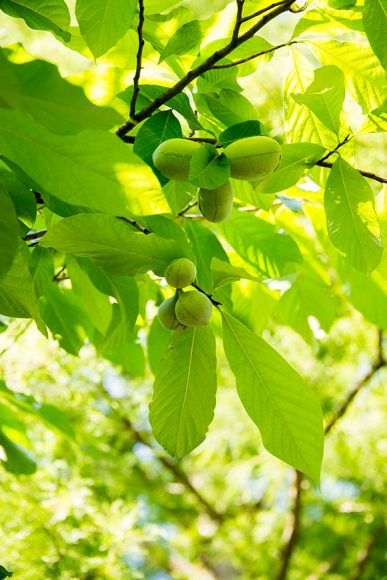
Another native plant that wouldn’t look out of place in the rain forest is the pawpaw tree (Asimina triloba). This native tree has green leaves that can reach a foot long. It’s a beautiful understory tree that will grow well in dappled shade with ample moisture (but never standing water). However, the real reward with pawpaws are the fruit. These large fruits have an incredibly tropical flavor, like a mix of mango, pineapple, and bananas. The fruit are among the last to ripen in the late summer and well worth the wait. To get a good crop of fruit, make sure to plant two varieties.
Pawpaws also get beautiful golden fall color, which only adds to their appeal. One note of caution however: the trees can sucker, so make sure to plant your pawpaw somewhere where this isn’t a problem, or make sure to remove the suckers as they sprout. Look for pawpaws in the Bulb Garden, Regenstein Fruit & Vegetable Garden, and Native Plant Garden.
And finally, what is a tropical garden without lush fragrances? Clethra alnifolia is a hardy shrub that thrives in partial shade and boasts intensely fragrant blooms in late summer.
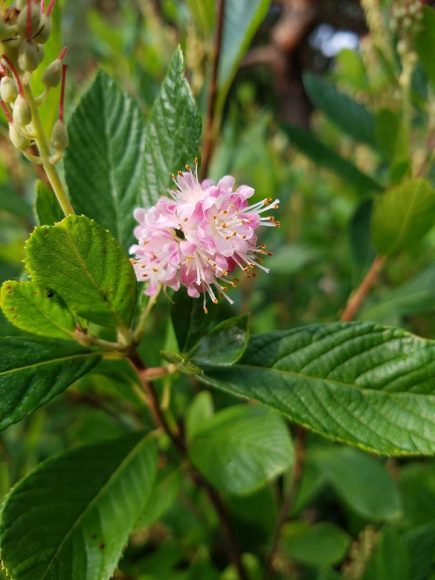
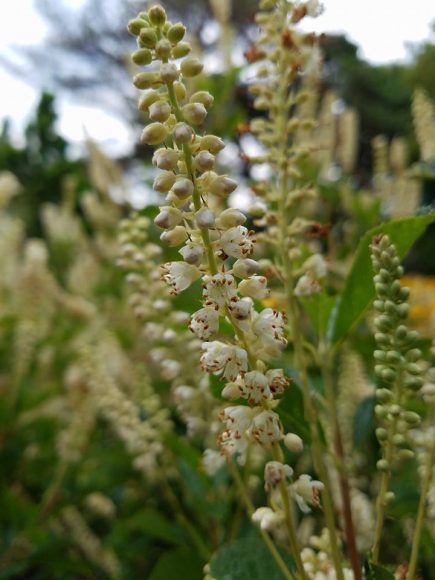
Clethra flowers have a rich smell similar to gardenia, but with spicy undertones. The flowers are tall spikes of white or pink and are a magnet for pollinators such as honeybees and hummingbirds. With careful planning, you can mix varieties of clethra and have blooms that last from mid-July through late August. Several varieties of clethra can be found in the Sensory Garden.
See Brazil in the Garden through October 15, 2017.
©2017 Chicago Botanic Garden and my.chicagobotanic.org

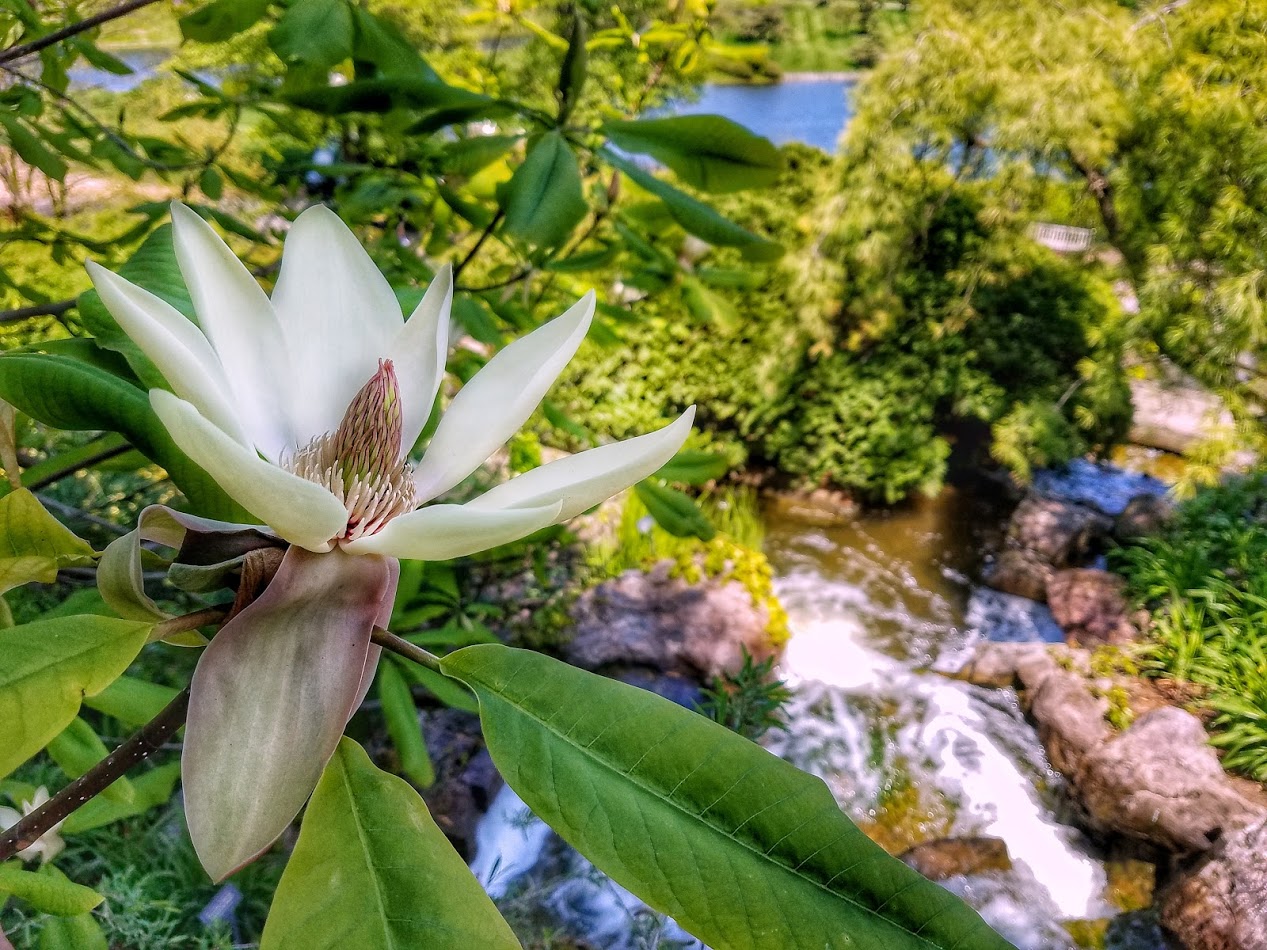

 A city with the motto “Urbs in Horto” (Latin for “City in a Garden”) deserves a signature fragrance: Tru Blooms Chicago debuts this fall as our fair city’s first-ever fine perfume. Today, the Chicago Botanic Garden held a preview of the fragrance and we personally enjoyed the lovely floral scent. Here’s why it’s a standout: it’s made with flowers grown in urban gardens throughout the Chicago area.
A city with the motto “Urbs in Horto” (Latin for “City in a Garden”) deserves a signature fragrance: Tru Blooms Chicago debuts this fall as our fair city’s first-ever fine perfume. Today, the Chicago Botanic Garden held a preview of the fragrance and we personally enjoyed the lovely floral scent. Here’s why it’s a standout: it’s made with flowers grown in urban gardens throughout the Chicago area.